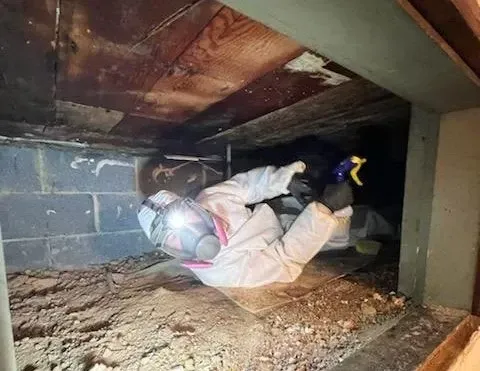6 Myths About Mold: A Comprehensive Guide

"Knowledge is power," as the adage goes. Yet, the absence of accurate knowledge, particularly about mold, can lead to unexpected problems ranging from health hazards to costly property damage. A proliferation of misconceptions about mold makes it crucial for homeowners and property managers to be well informed. So, in areas like Brunswick County, NC, where humidity can encourage mold growth, it's essential to understand mold.
As a type of fungi, mold thrives in damp environments and multiplies by discharging spores into the air. Certain mold types can be harmful, causing health issues, especially when present in large amounts. Hence, regular mold inspection is crucial in the attic or crawlspace. Now, let's address some widely held but incorrect beliefs about mold.
- Myth 1: All Mold is Harmless - Contrary to this popular misconception, not all mold is benign. Some mold species, such as Stachybotrys chartarum or "black mold," can produce mycotoxins, which are toxic substances. Exposure to mycotoxins can lead to health problems like allergic reactions, respiratory complications, skin irritations, and in extreme cases, neurological disorders. If you are immunocompromised, you can be particularly vulnerable, underscoring the importance of thorough attic mold inspection and remediation.
- Myth 2: Mold is Only a Problem in Old Buildings - Mold is not exclusive to old buildings. Older structures may be more prone to mold due to leakages or insufficient ventilation. However, mold can manifest in any building, irrespective of its age. Mold thrives in moist environments. They also require a food source, such as carpet or drywall. Modern buildings with poor ventilation or unresolved water damage are just as susceptible to mold problems, emphasizing the need for crawlspace mold inspection and remediation.
- Myth 3: Small Amounts of Mold are Not Dangerous - Even small quantities of mold can be hazardous, especially for individuals with mold allergies or sensitivity. While a tiny mold patch might seem innocuous, it can quickly increase under the right conditions, potentially leading to a large infestation and increased health risks. If you see a small patch of mold, it's essential to address it promptly to prevent a more significant problem, especially in hidden areas like attics and crawlspaces.
- Myth 4: Cleaning Mold Yourself is Always Safe - This is a risky assumption. Mold releases spores that can be detrimental to your health when inhaled. Cleaning mold without the proper safety gear or adequate knowledge can worsen the problem, spreading spores throughout your home or business. That's why professional attic mold remediation and crawlspace mold remediation are often the safest approaches.
- Myth 5: Once Mold is Removed, it Never Comes Back - If only this were true! Mold, unfortunately, can return if the conditions that enabled its growth persist. Proper mold remediation involves eradicating the visible mold and fixing the underlying issues, such as leaks or humidity, that facilitate its growth. You must address these issues to avoid facing the same problem again, particularly in the often overlooked areas such as attics and crawlspaces.
- Myth 6: Insurance Always Covers Mold Remediation - Homeowners' insurance doesn't always cover mold remediation. Typically, insurance coverage depends on the cause of the mold. If the mold results from a sudden accident, like a burst pipe, the cost of mold remediation may be covered. However, if the mold growth was due to neglect or a lack of maintenance, the remediation costs will likely come out of your pocket, emphasizing the value of regular mold inspections.
Misconceptions about mold can lead to detrimental effects on both health and property. Ensuring you are informed about the realities of mold is paramount in preventing and effectively handling mold issues. In areas like Brunswick County, NC, stay vigilant, seek professional advice when needed, and remember, a damp, musty environment is mold's best friend! Reach out today for all your mold inspection and mold remediation Brunswick County NC needs.



